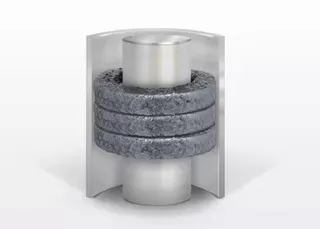Notifications

5 minutes, 59 seconds
-20 Views 0 Comments 0 Likes 0 Reviews

China Industrial Valve Seal Kits Manufacturer Provides Low Emission Valves and High-Performance Valve Packing & Seal Materials for Demanding Applications.
In modern industrial operations, valves serve as critical components for controlling fluid flow, directly impacting the safety, stability, and efficiency of production processes. High-temperature valves, in particular, operate under extreme conditions and face unique challenges—most notably in achieving reliable stem packing seals. Traditional sealing methods frequently fail under such conditions, making this a longstanding and pressing issue in the valve industry. This article explores the current state and challenges of high-temperature valve stem packing sealing technology and introduces an innovative compensating packing sealing structure as a practical and effective solution.
High-temperature valves are generally defined as those operating above 250℃. Under such conditions, the sealing system—especially the stem packing—must endure elevated thermal stress and maintain integrity over long periods. The failure of stem seals due to leakage not only leads to downtime and equipment damage but also increases the risk of environmental pollution and safety incidents.
Stem packing sealing is a widely used method due to its simple structure, ease of replacement, and cost-effectiveness. However, its effectiveness is significantly compromised under high-temperature conditions. Factors such as packing material selection, structural design, installation, and operational environment all influence sealing performance.
Two main mechanisms drive the sealing process:
Bearing Effect: A boundary layer forms between the stem and packing, aided by axial compression and external lubricants, reducing friction and maintaining a seal.
Labyrinth Effect: Gaps between the stem and packing create a tortuous path for fluid, resulting in pressure reduction and flow throttling. However, due to unavoidable stem surface roughness and installation gaps, leakage remains a persistent issue.
PTFE Packing: Ideal for corrosive media in food, pharmaceutical, and chemical industries. Max temp: 260℃; Pressure: ≤20 MPa.
Expanded Graphite Packing: Excellent thermal resistance and self-lubrication; Temp: ≤600℃; Pressure: ≤20 MPa.
Reinforced Graphite Packing: Enhanced with stainless steel, copper, or nickel wire for high strength and pressure tolerance; Temp: ≤550℃; Pressure: ≤32 MPa.
Aramid Fiber Packing: High chemical resistance.
Aramid/Carbon Fiber Composite Packing: Suitable for high-load rotating shafts under long-term operation.
Despite advancements in materials, conventional packing often fails in actual high-temperature valve applications.
Graphite packings, though widely used, are prone to leakage when exposed to high temperatures for extended durations.
Uneven Sealing Pressure: The axial compression from the gland creates non-uniform pressure distribution, causing inconsistent packing deformation and ineffective sealing.
Friction and Wear: High axial force at the top layers increases friction and thermal expansion, accelerating wear at contact points between the stem and packing.
Thermal Degradation: Continuous high temperatures exacerbate these effects, reducing sealing lifespan and reliability.
To address the shortcomings of conventional sealing systems, a compensating packing sealing structure has been developed, tailored for both high-temperature low-pressure and high-temperature high-pressure environments.
This structure incorporates a compensating coiled torsion spring combined with composite graphite packing, eliminating the need for traditional packing spacers. A preloaded spring compensates for wear and thermal expansion, ensuring constant sealing force. This design significantly enhances sealing reliability under low-pressure conditions while simplifying the structure.
For more demanding environments, a dual-compensation system is used, comprising a butterfly spring and a coiled torsion spring. These elements work independently to maintain seal integrity, even if one compensation point fails. The external spring configuration allows for easy replacement and maintenance without disassembling the valve body, improving operational efficiency and reducing downtime.
High-temperature valve stem packing sealing has long been a bottleneck in achieving reliable industrial valve performance. Traditional methods often fall short under the stress of elevated temperatures and pressures. The compensating packing sealing structure provides a robust and innovative solution. By introducing adaptive compensation mechanisms, this design ensures long-term sealing integrity and operational stability across diverse industrial environments. Its proven effectiveness under both low and high-pressure high-temperature scenarios marks a significant advancement in valve technology with broad industrial applicability.Know more about Google SEO Directory
China Valve Manufacturer Valve Packing Manufacturer China Valve Seals Valve Seal Kits

